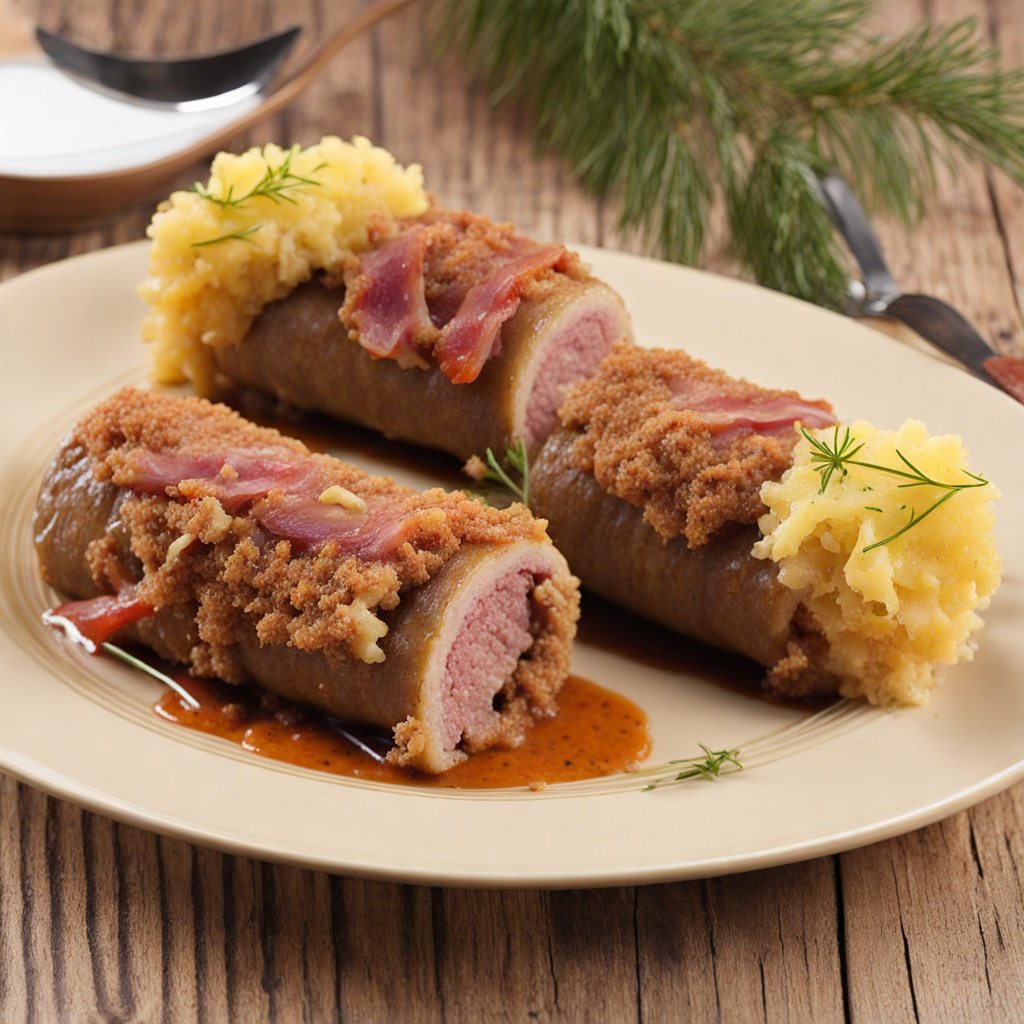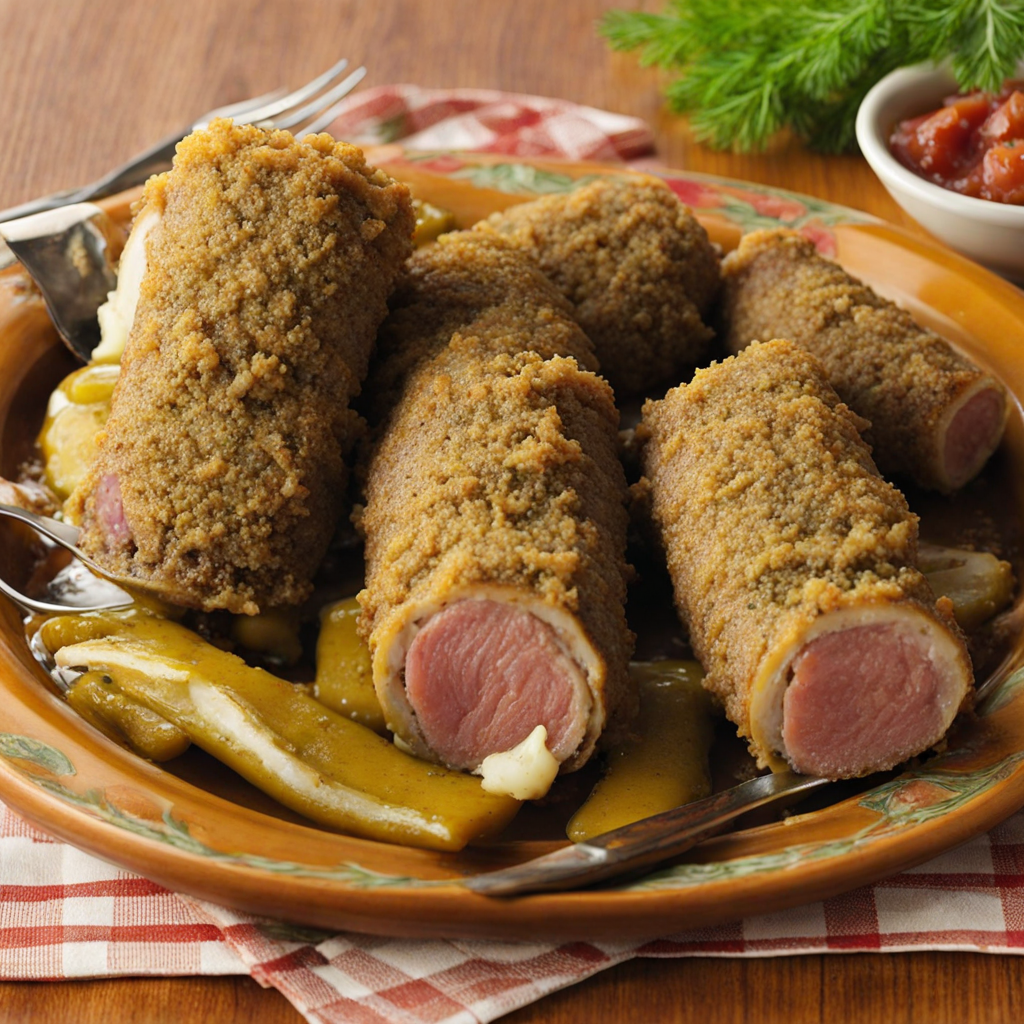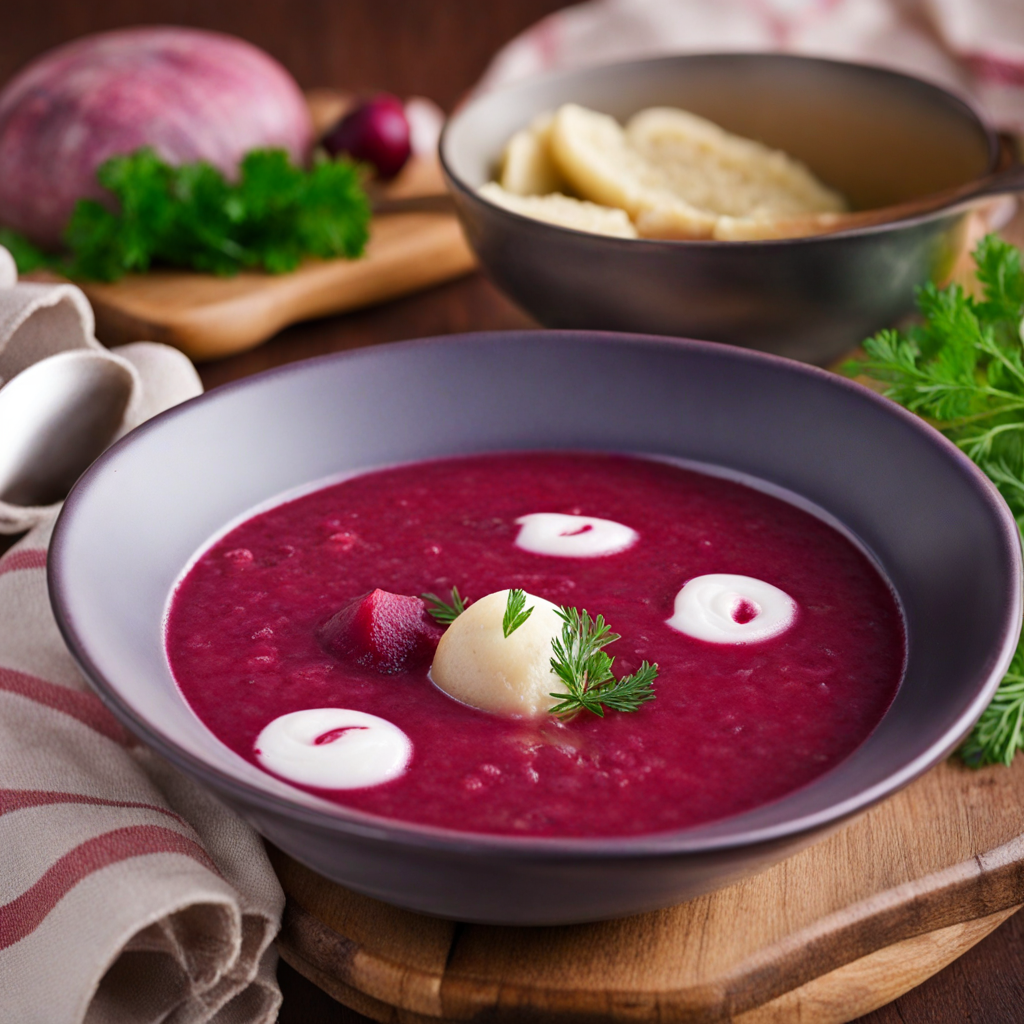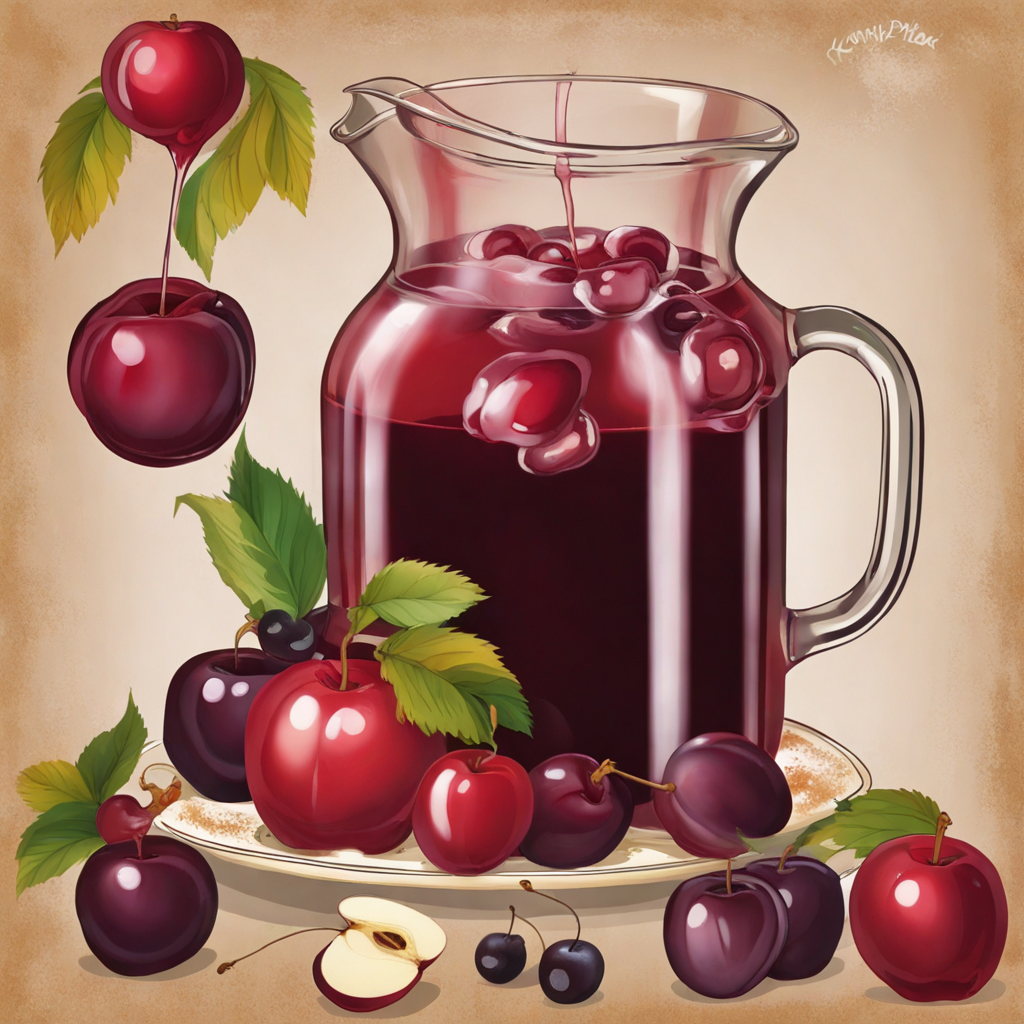Zrazy
Zrazy is a traditional Polish dish that showcases the rich flavors and hearty ingredients characteristic of Eastern European cuisine. At its core, zrazy consists of thinly sliced beef or pork that is typically filled with a variety of savory fillings, such as mushrooms, onions, pickles, and sometimes even hard-boiled eggs. The meat is rolled around the filling and secured, then pan-fried or braised until tender. This method of preparation not only enhances the flavor but also seals in the juices, resulting in a succulent and satisfying dish that warms the heart and soul. The cooking process of zrazy often involves browning the rolls in a hot skillet to develop a rich crust, followed by simmering them in a flavorful broth or sauce. This dual technique creates a delightful contrast between the crispy exterior and the tender, juicy interior. The sauce, typically made from the drippings of the meat mixed with broth or wine, adds depth and complexity, making each bite an exploration of flavors. Zrazy is usually served with sides such as mashed potatoes or sauerkraut, which complement the dish and add an extra layer of texture and taste. This delightful dish is not just a meal; it is a celebration of Polish culinary heritage, often enjoyed during family gatherings and festive occasions. Every region in Poland may have its own variation of zrazy, resulting in a delightful array of flavors that reflect local ingredients and traditions. Whether you are savoring a classic version or a modern twist, zrazy promises to deliver an unforgettable experience that will leave your taste buds craving more.
How It Became This Dish
The History of Zrazy: A Culinary Journey Through Poland Zrazy, a cherished dish in Polish cuisine, is more than just a meal; it is a connection to the rich tapestry of Poland's culinary and cultural history. These rolled meat dishes, often filled with various ingredients, embody the creativity of Polish cooks and the influences of neighboring cultures. Their history spans centuries, revealing not only the evolution of Polish gastronomy but also the socio-economic changes that have shaped the nation. #### Origins and Etymology The word "zrazy" has its roots in the Polish language, derived from the verb "zrazić," meaning "to slice." Traditionally, zrazy refers to thin slices of meat, usually beef, that are rolled around a filling. The dish has a Slavic origin, with connections to similar rolled meat preparations found in various Central and Eastern European cuisines. The practice of rolling meat around a filling is an ancient one, with evidence pointing to its existence as far back as the Middle Ages. In Poland, zrazy is thought to have gained popularity in the 19th century, particularly among the nobility and in the homes of the affluent. The dish was often served at celebratory feasts and gatherings, reflecting the culinary sophistication of the time. As Poland's borders shifted and its political landscape transformed, zrazy adapted, drawing from various traditions and influences, from Ukrainian to Jewish culinary practices. #### Cultural Significance Zrazy holds a significant cultural place in Poland, symbolizing hospitality and familial bonds. It is often associated with special occasions, such as weddings, holidays, and family gatherings. The dish is not just a meal; it is a way to bring people together, fostering connections through shared culinary experiences. Historically, zrazy was prepared during festive occasions, showcasing the skills of the cook and the abundance of the household. The fillings could vary widely, from mushrooms, pickles, and onions to bacon and hard-boiled eggs, depending on regional preferences and seasonal availability. This adaptability has allowed zrazy to remain relevant in Polish cuisine, evolving with the times while retaining its core identity. #### Ingredients and Preparation The main ingredient of zrazy is typically beef, although other meats like pork or chicken are sometimes used. The beef is usually pounded thin, making it pliable enough to roll around the filling. The fillings themselves can vary significantly, reflecting local tastes and ingredients. In some regions, zrazy is filled with a mixture of sautéed onions and mushrooms, while in others, it might include pickled cucumbers or even dried fruits. The preparation of zrazy is a labor-intensive process, often passed down through generations. It begins with marinating the meat to enhance its flavor and tenderness. Once the meat is prepared, the filling is laid out, and the meat is carefully rolled and secured, typically with kitchen twine or toothpicks. The rolls are then seared to create a golden crust before being simmered in a rich sauce, often made from broth and vegetables, which infuses the dish with additional flavor. #### Regional Variations As with many traditional dishes, zrazy has regional variations across Poland. In Greater Poland (Wielkopolska), for example, zrazy might be filled with a hearty mixture of pork and vegetables, while in the Lublin region, one might find them stuffed with sauerkraut and bacon. In Silesia, zrazy are sometimes made with a filling of potatoes and cheese, reflecting the agricultural abundance of the region. Moreover, the Jewish community in Poland contributed its own interpretation of zrazy, often using different spices and cooking methods due to dietary laws. These variations showcase the dish's adaptability and its ability to incorporate diverse cultural influences while retaining its Polish identity. #### Modern Day Relevance In contemporary Poland, zrazy remains a beloved dish, often served in traditional restaurants and during family gatherings. Its enduring popularity can be attributed to its nostalgic value; many Poles associate zrazy with their childhood memories of family dinners and festive celebrations. In recent years, there has been a resurgence of interest in traditional Polish cuisine, with chefs and home cooks alike exploring and reinventing classic dishes like zrazy. Some modern interpretations feature innovative fillings and cooking techniques, while still honoring the traditional preparation methods. This fusion of old and new allows zrazy to remain relevant in the ever-evolving culinary landscape of Poland. Zrazy has also found its way onto international menus, as Polish cuisine garners attention in the global food scene. Food festivals celebrating Polish culture often feature zrazy, introducing this delightful dish to new audiences and fostering a greater appreciation for Poland's culinary heritage. #### Conclusion The journey of zrazy from its humble origins to a symbol of Polish culinary heritage is a testament to the resilience and adaptability of traditional foods. This dish encapsulates the rich flavors and cultural nuances of Poland, weaving together a narrative that spans centuries. As zrazy continues to be enjoyed in homes and restaurants, it serves as a delicious reminder of the importance of food in connecting people, preserving traditions, and celebrating heritage. Whether enjoyed at a festive gathering or prepared at home with family, zrazy remains an enduring emblem of Polish culture, forever evolving yet steadfast in its roots. The history of zrazy is not just about food; it is about community, tradition, and the stories that are shared around the table.
You may like
Discover local flavors from Poland







